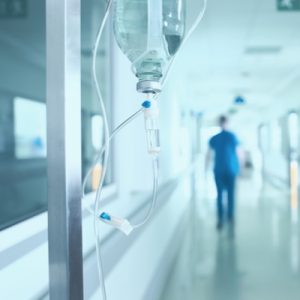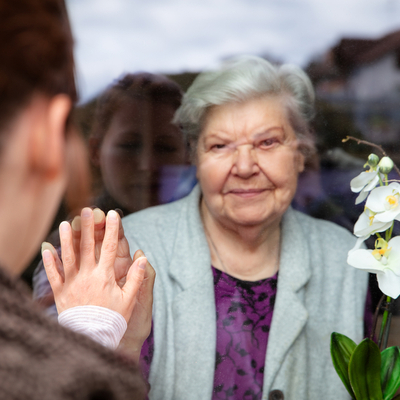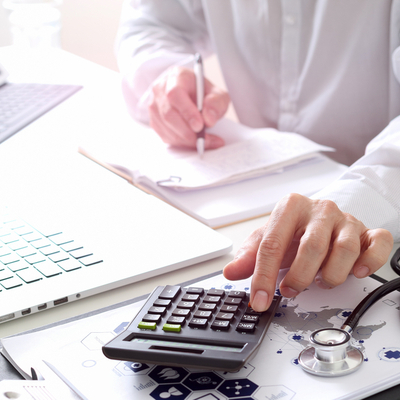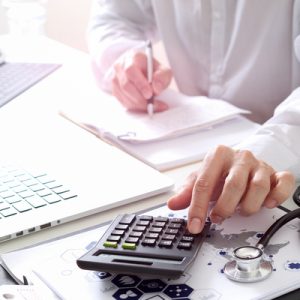 In this 25-minute webinar by Karin Teske, a senior analyst for research and evaluation at the Center for Health and Research Transformation (CHRT), viewers will learn about the rapid advance of telehealth in the midst of the COVID-19 pandemic.
In this 25-minute webinar by Karin Teske, a senior analyst for research and evaluation at the Center for Health and Research Transformation (CHRT), viewers will learn about the rapid advance of telehealth in the midst of the COVID-19 pandemic.
Three experts will join this webinar to discuss their perspectives on how the pandemic has changed the way healthcare is provided through telemedicine and the difficulties in ensuring that everyone has access to these services.
Teske shares telehealth use and uptake data from before the COVID-19 pandemic and offers a glimpse of what’s changed since March 2020. She reviews new policies governing the provision of telehealth for national Medicaid clients and Michigan Medicare and commercial plan clients. She also describes who has been left out of the telemedicine transformation, and what we can do to address that.
The experts also note that there are still problems with telehealth access, notably for elders, people living in rural areas, low-income people, and people without a strong background in technology or health literacy.
Listen to COVID-19 transforms healthcare delivery via telehealth, but does everyone have access?, one in a series of COVID-19 webinars organized by the Michigan State University College of Osteopathic Medicine.
Note: The telemedicine landscape has been rapidly evolving. For updates, please reach out to her.


 The COVID-19 pandemic has disproportionately impacted low-income areas, escalating already-existing health disparities and economic difficulties. As a result, innovative strategies have been developed to aid in protecting these communities from the virus and its effects.
The COVID-19 pandemic has disproportionately impacted low-income areas, escalating already-existing health disparities and economic difficulties. As a result, innovative strategies have been developed to aid in protecting these communities from the virus and its effects.




 As the COVID-19 pandemic forces hospitals to focus on essential procedures, reducing revenues at healthcare facilities across Michigan, many rural hospitals are struggling to stay open. In this Michigan Health Watch series, Bridge Magazine’s Ted Roelofs examines some of the ways the coronavirus response is squeezing operating margins for rural healthcare providers, even if they may not be treating many COVID-19 patients.
As the COVID-19 pandemic forces hospitals to focus on essential procedures, reducing revenues at healthcare facilities across Michigan, many rural hospitals are struggling to stay open. In this Michigan Health Watch series, Bridge Magazine’s Ted Roelofs examines some of the ways the coronavirus response is squeezing operating margins for rural healthcare providers, even if they may not be treating many COVID-19 patients.
 Michigan has been especially hit hard by COVID-19. In an effort to slow the spread of coronavirus and to reduce the strain on hospitals and healthcare workers, Michigan Governor Gretchen Whitmer has issued aggressive stay-at-home orders. In “Something big is getting lost in the debate over stay-at-home orders,” Jonathan Cohn, a Huffington Post reporter, explores why these guidelines have sparked protests by those who believe their freedoms are unnecessarily inhibited. Some people are demanding an end to the lockdown procedures and a return to normal life.
Michigan has been especially hit hard by COVID-19. In an effort to slow the spread of coronavirus and to reduce the strain on hospitals and healthcare workers, Michigan Governor Gretchen Whitmer has issued aggressive stay-at-home orders. In “Something big is getting lost in the debate over stay-at-home orders,” Jonathan Cohn, a Huffington Post reporter, explores why these guidelines have sparked protests by those who believe their freedoms are unnecessarily inhibited. Some people are demanding an end to the lockdown procedures and a return to normal life.
 WEMU’s Lisa Barry explores the idea of an immunity certification system that could exempt those who have COVID-19 antibodies from some social distancing restrictions and allow them to go back to work. Dr. Denise Anthony,
WEMU’s Lisa Barry explores the idea of an immunity certification system that could exempt those who have COVID-19 antibodies from some social distancing restrictions and allow them to go back to work. Dr. Denise Anthony, 
 As part of their continuing Health Watch series, Bridge Magazine continues their focus on hospital staffing and the economics behind the perplexing circumstance of healthcare workers losing their jobs during a health crisis. Writing for today’s Bridge, Brie Zeltner notes that the surge in coronavirus patients has increased staffing and equipment costs even as COVID-19 treatments bring in less revenue than the outpatient and elective procedures that have previously been the foundation of hospital business models.
As part of their continuing Health Watch series, Bridge Magazine continues their focus on hospital staffing and the economics behind the perplexing circumstance of healthcare workers losing their jobs during a health crisis. Writing for today’s Bridge, Brie Zeltner notes that the surge in coronavirus patients has increased staffing and equipment costs even as COVID-19 treatments bring in less revenue than the outpatient and elective procedures that have previously been the foundation of hospital business models.

 The COVID-19 pandemic has had an unprecedented impact on healthcare systems worldwide, and Detroit is no exception.
The COVID-19 pandemic has had an unprecedented impact on healthcare systems worldwide, and Detroit is no exception.